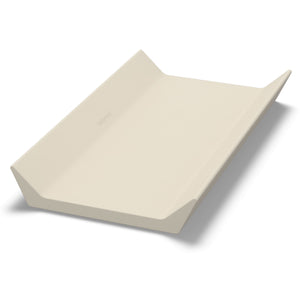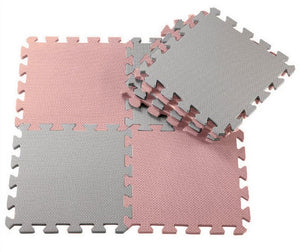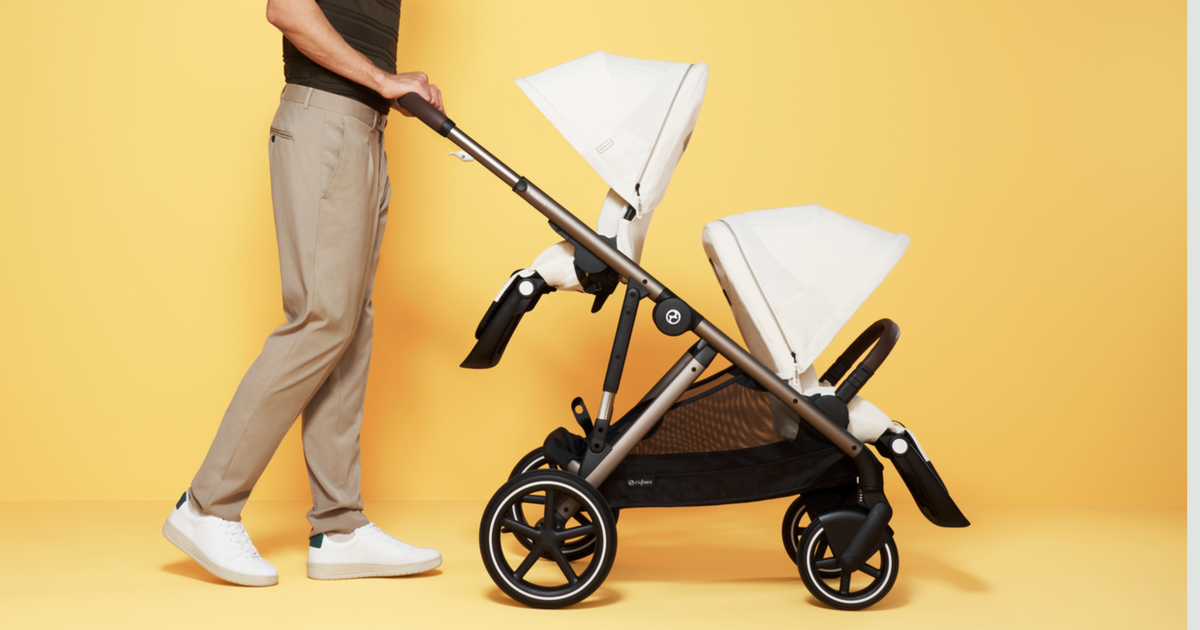Everything you need to know about tummy time

If you’re a first-time parent, you may be hearing ‘tummy time’ for the first time, whether at your health practitioner’s office or when chatting to other parents. Are you curious what the fuss is about?
As it turns out, this simple exercise offers numerous benefits for babies’ physical, cognitive and motor development. So, what is it, how does it benefit your baby, when should you start and what tips and tricks can you implement?
Join us as we cover the tummy time basics so you (and baby!) can get the most out of this important developmental stage.
What is tummy time and why should my baby do it?
Tummy time refers to the practice of placing your baby on their stomach while they are awake and supervised. It is recommended by paediatricians to help babies develop their gross motor skills while simultaneously reducing their chances of developing ‘flat head syndrome’ (plagiocephaly), from staying in the same position for prolonged periods of time while their skulls are still soft. It’s a win-win really!
When babies are placed on their stomachs, they naturally attempt to lift their heads in order to check out their surroundings. This means that by introducing tummy time to your little one from an early age, you are helping them to strengthen their neck, shoulder and upper body muscles and setting them up for success from the very beginning.
How does tummy time help my baby’s physical, cognitive and motor development?
Regular tummy time sessions can go a long way in helping your little one achieve important developmental milestones, from head control to hand-eye coordination, rolling over, crawling and eventually, even sitting up. By placing them in this position, you’re helping your little one to develop the muscles they’ll need to get around as they grow.
In addition to increasing their overall strength, tummy time also helps develop your baby’s fine and gross motor skills as they learn to push their bodies in different directions, as well as how to reach and grasp objects.
Tummy time also allows babies to experience a different perspective of the world around them. The opportunity to explore their surroundings visually plays an important role in enhancing their cognitive development as they learn to focus on objects, track movements and discover depth perception. Lying on their bellies also helps babies develop their senses, including touch, hearing and smell as they explore different textures for the first time. It’s an exciting time!

My baby doesn’t seem to like tummy time. What can I do?
Babies’ heads are very heavy which can understandably make tummy time quite hard for them to start with. To keep trying, they (like all of us!) need to be motivated. The first few times are often the hardest, and your baby might only tolerate it for a minute or two. With daily practice however, this will get easier, so don’t give up!
In the meantime, there are various techniques you can implement to make tummy time more engaging and enjoyable for your baby. If they still get upset when you place them on their stomach, you can try:
- Distracting them with play
- Getting down onto the floor alongside them
- Using stimulating toys like rattles and mirrors
- Incorporating high contrast black and white toys or books that grab their attention
- Engaging with them through eye-contact, singing or talking
- Repositioning them (propping them up on their elbows can make them more comfortable)
Always remember that each baby is unique and will develop at their own pace, so do not be discouraged if your little one doesn’t take to tummy time initially or takes longer to reach the milestones associated with it. As long as you provide regular opportunities for tummy time, your baby will gradually build the necessary strength and skills required. Don’t be afraid to bring up any concerns you have with your paediatrician.

Which surfaces are best for tummy time?
Now that we’re on the same page about why tummy time is so beneficial, it’s time to think about which surfaces might be best for the job. When looking at different options, you want to consider safety, comfort and support.
It’s important to strike a balance between a surface that is soft enough to be gentle on their skin and joints, while maintaining a level of firmness that allows them to press up without sinking.
There are a wide range of rugs and mats suitable for tummy time on the market, at various price points and made from very different materials. Here are some options to help guide your search:
-
Most affordable surface: Foam mats
Finding the sweet spot of supportive yet cushioning, foam is a great surface for little ones to practice tummy time, and eventually, crawling. It does a great job of reducing the impact on their elbows, knees and head if they lose their balance while on their tummies, making the experience more comfortable for your little one.
Super lightweight and easy to transport, foam mats can easily be placed anywhere indoors and outdoors. Easy to wipe down, they tend to remain hygienic as long as they are cleaned regularly, but can absorb liquids if you’re not careful. They can also provide a thermal barrier between the baby and cold floors below, making winter tummy time much more appealing. Lastly, foam mats can come in a variety of colours, patterns and even textures, which can support sensory stimulation during tummy time.
-
Best multipurpose surface: Nova change mat
Baby products can get expensive quickly, so parents have a lot of love for items with multipurpose uses! Convenient, comfortable, supportive, hygienic... and something you likely already have, Babyrest Nova change mat is here to make your life easier.
Made from PUR, a foamed-rubber compound, the Nova finds the sweet spot between supportive and comfortable, making it particularly ideal in the early months when your little one is learning to lift their head up. It’s portable with a grippy base, making it suited for various surfaces, from floors, to rugs and even the grass outside. Super easy to wipe down, its smooth, sealed surface prevents mould and bacteria growth, keeping it clean and hygienic. Visiting family or friends? You can pack less when you’ve got both a change mat and tummy time surface rolled into one!
-
Best natural surface: Lambskin rugs
Super lightweight, soft and lush, you can place a lambskin rug wherever you are, adding an extra layer of cushioning to your wood, tile or even carpeted floors. As long as you place the rug on a firm surface, it will offer enough support for your little one to be able to push their body up.
Babies love feeling the texture of the wool tufts between their fingers. This sensory aspect not only adds to their overall tummy time experience, but can also offer a soothing effect for babies feeling anxious or overwhelmed.
An organic fibre, lambskin rugs offer a long list of benefits, from being naturally hypoallergenic and resistant to dust mites (ideal for babies with allergies and sensitive skin), to being moisture-wicking (keeping baby dry), not to mention temperature regulating (keeping baby cool in summer and warm in winter).
Please note that this surface does require active supervision due to the woolen strands that your baby could put in their mouths or roll onto face-down. It is better suited to little ones who are already able to lift their heads up.
Read Why parents love the Babyrest Lambskin Rug →
-
Most luxurious surface: Vegan leather mats
While they can lean to the pricier side, vegan leather mats tend to be as beautiful as they are practical. Cruelty-free, vegan leather is typically made from synthetic materials like polyurethane or vinyl and filled with polyester or similar filling for padding.
Soft and versatile, vegan leather mats are gentle on the skin and easy to pick up and place where needed. They are also known to be durable and weather wear and tear well. Vegan leather mats are often water-resistant or waterproof, making them easy to wipe clean. The smooth, non-porous surface of vegan leather prevents nasties from seeping into the material and harbouring bacteria or odours.
-
Most engaging surface: Multisensory activity mats
Often brightly coloured with movable parts, different textures, not to mention different sounds and even mirrors, these are highly entertaining and can help babies enjoy tummy time. They come in a range of shapes, sizes and materials, from quilted cotton to transparent, heavy-duty PVC filled with water, glitter and toys!
Because of their many features, multisensory mats can be quite expensive, so it’s important to note that as fun as they are, babies do not need them to thrive or to succeed at tummy time (but they may keep them busy enough to give you time to finish eating your breakfast!).
As exciting as these mats are, they are best used in conjunction with other less stimulating rugs to prevent overstimulation. Balance is key! It's also important to remember that the movable parts and different textures could pose safety hazards to your little one if not actively supervised.
Whichever surfaces you end up choosing, we cannot understate the importance of always supervising your child during tummy time. Before you place your baby down, remember to ensure the space is clean, as well as free from any hazards that could cause injury (or be ingested).
At the end of the day, you want to select a surface that is safe, soft and promotes a comfortable and engaging experience for your baby. We hope your baby loves tummy time and that it is a wonderful bonding experience for the whole family!
Discover the Babyrest wool range:
- Natural Lambskin Rug →
- Babyrest Lambswool Cot Underlay →
- Babyrest Lambswool Portacot Underlay →
- Babyrest Cot Quilt - Wool Filled →
Anstel has a team of passionate expert representatives. Get in touch with us today with any questions about your nursery sleep essentials!
Learn more about our Australian range:
- “So soft and lush” Why parents love the Babyrest Lambskin Rug
- What makes lambswool so great for babies?
- Why choose Australian made?
- “A must have!” Why parents love Babyrest wool underlays
- How this Aussie mum finally found the perfect cot mattress
- How we make baby mattresses in Melbourne
- How we design baby mattresses (and other essentials)
Keep reading:





